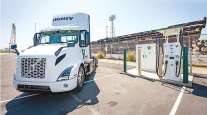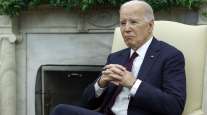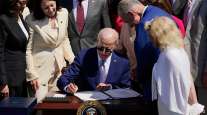Senior Reporter
On Infrastructure, Trump Touts Regulatory Streamlining, Biden Eyes Clean Energy
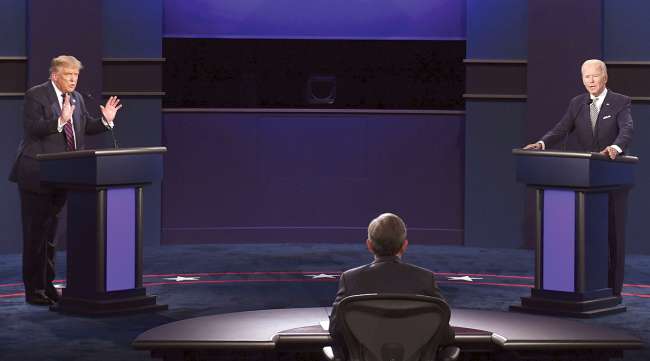
[Stay on top of transportation news: Get TTNews in your inbox.]
In an election year marked by a historic health crisis and contentious, high-stakes debate on Capitol Hill and the campaign trail, the divisions between the two sides are often crystal clear — including with their plans for improving the nation’s infrastructure.
President Donald Trump and his reelection team tout a persistent push to reform environmental permitting guidance and the likelihood of advancing a multiyear comprehensive highway policy update with congressional transportation leaders should he win reelection. Trump also is urging big-ticket construction projects that would add to recent economic progress and a populous freight and manufacturing sector.
Trump made streamlining the permitting process central to the White House’s infrastructure agenda. His administration announced a final rule this year meant to modernize and accelerate environmental reviews to enhance efficiency and affordability. The rule seeks to facilitate a two-year period for completion of certain environmental impact statements.
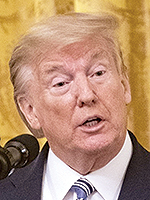
Trump
RELATED: Climate Change Resilience Front-and-Center for House Democrats
“We are cutting the federal permitting time line from a staggering 10 years, 15 years, 18 years, 21 years — you know the story; you’ve seen it — projects that start out. A young guy heads the project. By the time it gets approved or disapproved — in many cases, disapproved; usually disapproved — he’s getting ready to retire,” said the president this year in announcing an update to the National Environmental Policy Act, or NEPA.
For Democrats, former Vice President Joe Biden’s campaign is pursuing a different approach to addressing infrastructure. Biden’s “Build Back Better” proposal consists primarily of undoing significant aspects of the Trump-era tax cuts to fund an overhaul of the mobility grids. Biden’s multitrillion-dollar, multidecade infrastructure approach promises to deliver a massive fleet of electric vehicles.
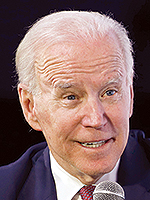
Biden
“The United States government owns and maintains an enormous fleet of vehicles,” Biden told union workers at an equipment factory this month. “We are going to convert many of them to electric vehicles, and you are going to still need to build these transmissions.”
On the issue of the climate, Trump expressed support for a Republican committee-passed Senate bill that would further streamline the environmental permitting process while tackling concerns related to climate change. Democrats on Capitol Hill, meanwhile, advanced a multitrillion dollar measure centered on climate change, which Republicans described as dead-on-arrival. As in much of the Biden campaign’s stance on infrastructure policy, the House bill proposed wide-ranging provisions meant to enhance the severe-weather resilience of freight and passenger corridors.
On surface transportation policy, Congress approved and Trump recently enacted a yearlong extension of the 2015 FAST Act highway policy law. Transportation policymakers agreed on an extension after being unable to reconcile differences in competing proposals. The highway law will now expire in the fall of 2021.
Neither Trump nor Biden has outlined a path forward for restoring the long-term solvency of the Highway Trust Fund, an account dependent on fuel tax revenue to assist states. The 24.4 cents-per-gallon diesel tax and 18.4 cents-per-gallon gas tax rates were set in 1993.
Stakeholders representing most corners of the industry praised the highway law’s yearlong extension.
“The [FAST Act] extension provides some stability for states to continue important transportation infrastructure projects for another year,” said Terry O’Sullivan, general president of the Laborers’ International Union of North America.
Throughout this election season, stakeholders have called on lawmakers to prioritize infrastructure funding to assist with economic recoveries. The Transportation Construction Coalition, the Americans for Transportation Mobility coalition, and the American Association of State Highway and Transportation Officials, for instance, continue to explain the need for additional emergency funding for state departments of Transportation and public transit systems. They also push for restoring the Highway Trust Fund’s solvency.

Connor
Additionally, the American Association of Port Authorities is calling on policymakers to approve $1.5 billion for seaports. Said AAPA President and CEO Christopher Connor: “It’s about ensuring that ports are able to keep pace with the accelerating costs of protecting their workers while keeping their workforce employed, ensuring bond and other debt instrument payments aren’t missed, and ultimately about maintaining a state of readiness to significantly aid in the nation’s eventual economic recovery.”
There’s an expectation that an infrastructure bill that would address funding woes, advancements in connected technologies, and rural broadband — high-speed internet necessary for fleet managers’ and drivers’ increasing reliance on onboard technology and tracking data — would be a priority for a second term of the Trump White House, said Ed Mortimer, vice president of transportation and infrastructure at the U.S. Chamber of Commerce.
“We have some great transportation leaders now,” Mortimer said. “And if they come back, we’re going to work with whomever is in those chairs to continue the efforts that are made to this point.”
Want more news? Listen to today's daily briefing:
Subscribe: Apple Podcasts | Spotify | Amazon Alexa | Google Assistant | More


